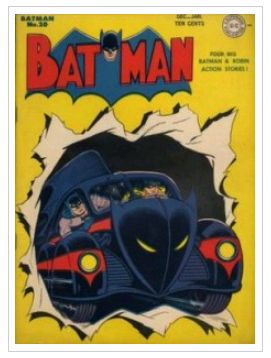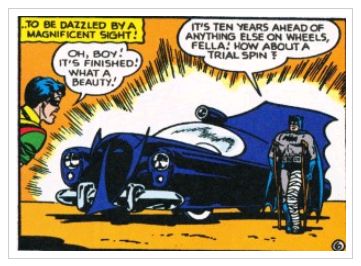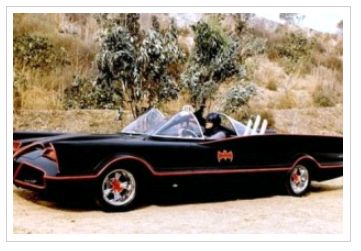
The Ninth Circuit Court of Appeals held that the Batmobile is a copyrightable character. The Ninth Circuit's opinion explaining its ruling begins with the sentence "Holy copyright law, Batman!," and goes on to quote Adam West and invoke other pop culture references. "
Since 1939, Batman has been featured in numerous publications by DC Comics, as well as in feature films and television shows. Since 1941, many of the comic books, films, and other works featuring Batman also depict his vehicle, the Batmobile.
At issue in this case were the versions of the Batmobile from the Batman television show (featuring Adam West as Batman) and the Tim Burton movies, featuring Michael Keaton as Batman.

The defendant owned Gotham Garage in Temecula, Calif., which made replicas based on the Batmobile's appearances in the 1960s live action television show and its 1989 appearance in the "Batman" movie. DC Comics brought a claim for copyright infringement, claiming rights in those versions of the Batmobile, even though the Batman comics published by DC did not feature Batmobile designs that looked like the Batmobile in the movies and/or on the TV show.

The Ninth Circuit pointed out that copyrights have extended to other "automotive characters," such as Eleanor in the 1971 and 2000 versions of "Gone in 60 Seconds." The Ninth Circuit also explained that a character could be protectable based on distinctive and consistent character traits "even if the character does not maintain the same physical appearance in every context." Some examples of such changing, protectable characters include James Bond, Godzilla, Spider Man, and even Batman. Thus, explained the court, "[a]s a copyrightable character, the Batmobile need not have a consistent appearance in every context, so long as the character has distinctive character traits and attributes."

Relying on the law set in the prior cases about characters and cars, the court set forth a three-part test for determining whether a character is protectable:
(1) Whether the character has "physical as well as conceptual qualities"?
(2) Whether the character "display[s] consistent, identifiable character traits and attributes," even if the character's appearance is not consistent?
(3) Whether the character is "especially distinctive" and incorporates "some unique elements of expression"?
With the test in mind, "[t]o the Batmobile!" the opinion goes. "No matter its specific physical appearance, the Batmobile is a 'crime-fighting' car with sleek and powerful characteristics that allow Batman to maneuver quickly while he fights villains," the opinion explains. "Equally important, the Batmobile always contains the most up-to-date weaponry and technology." After going through the various features and characteristics, the opinion concludes that the Batmobile is a protectable character.

The Ninth Circuit then rejected the argument that DC Comics did not own the rights to the versions of the Batmobile appearing in the 1966 TV show and the 1989 movie. According to the court, DC had the right to grant permission to the TV and movie producers to make derivative versions of its creative work – that is, updated versions of the Batmobile – but retained the rights in such derivative works.
The court explained its reasoning: "[A]s Batman so sagely told Robin, '[I]n our well-ordered society, protection of private property is essential.'"
The content of this article is intended to provide a general guide to the subject matter. Specialist advice should be sought about your specific circumstances.
